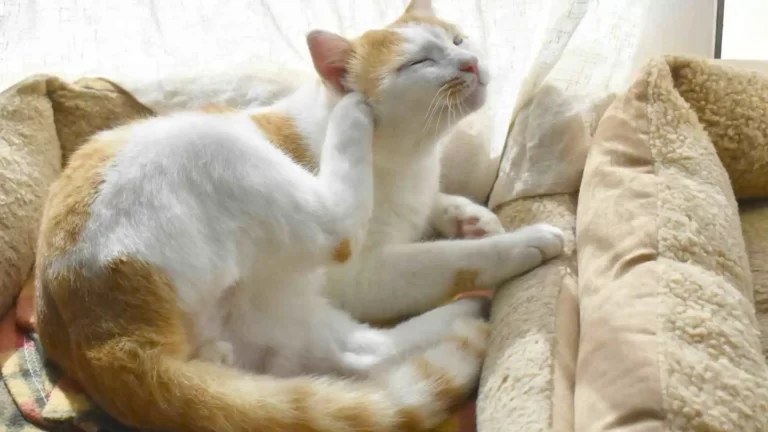Fleas on cats can be a problem that interferes with your pet’s health and comfort. Fleas can cause itching, skin irritation, and even lead to infection. Therefore, it is important to take effective measures to remove cat fleas immediately.
Identifying Fleas on Cats:
Itching and Excessive Scratching:
Flea-infested cats tend to itch and scratch or lick themselves frequently. Pay attention if your cat does this excessively.
Changes in Skin and Coat:
Fleas can cause irritation to a cat’s skin, which can be seen through discoloration or texture changes in certain areas. The cat’s coat may also appear dull and unhealthy.
Flea Eggs (Pedi Eggs):
A hallmark of fleas is the presence of flea eggs called “pedi” attached to the cat’s fur. Pedi usually look like small white grains of salt or dust.
Fatigue and Decreased Activity:
Cats plagued by fleas may show signs of fatigue, decreased appetite, and an overall decrease in activity.
Dark Patches on the Skin:
Black or dark brown patches on the cat’s skin can be flea feces. This is referred to as “flea dirt” and is a sign of flea excretion.
How to Get Rid of Cat Fleas Effectively:
Bathe the Cat with Anti-Flea Shampoo:
One of the most direct and effective ways is to bathe the cat using a specialized anti-flea shampoo for pets. Be sure to choose a cat-safe product and follow the directions carefully. Bathe your cat regularly, especially if he has access to the outdoors.
Use Topical Anti-Flea Medication:
Topical anti-flea medications such as drops or spot-on can be an effective solution. Apply the product on the back of the cat’s neck, where the cat has difficulty licking or scratching. The medication will spread throughout the cat’s body over time and kill the fleas and prevent further infestation.
Comb with an Anti-Flea Comb:
An anti-flea comb with tight teeth can help remove fleas and eggs from a cat’s coat. Comb regularly, especially in vulnerable areas such as the neck, back and around the tail. Be sure to remove any fleas trapped in the comb.
Clean Environment:
Fleas not only inhabit cat hair, but can also be spread in the surrounding environment. Wash cat nests, toys and bedding regularly. Use anti-flea products to clean these areas and make sure to keep them clean.
Consult a Veterinarian:
If your cat’s flea infestation persists or more serious health problems occur, consult a veterinarian immediately. They can provide more specific advice according to your cat’s condition and may prescribe stronger treatment.
Use Natural Remedies:
Some cat owners opt for natural treatment methods to treat fleas. For example, neem oil or coconut oil can be used as natural flea repellents. However, be sure to consult a veterinarian before using natural remedies to ensure their safety and effectiveness.
Getting rid of fleas on cats requires patience and consistency. It is important to provide regular grooming and keep the cat’s living environment clean. By following the steps above, you can help your cat become flea-free and maintain good health.

